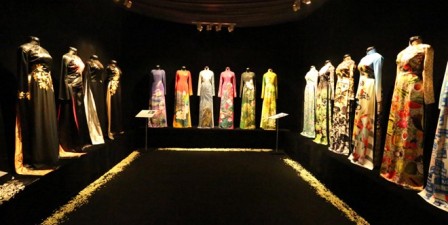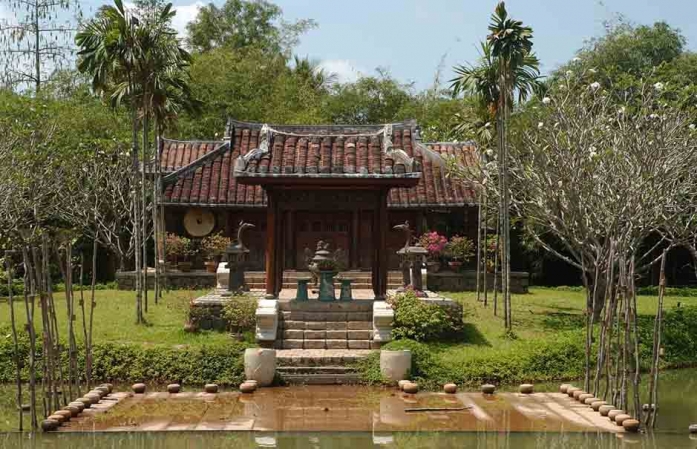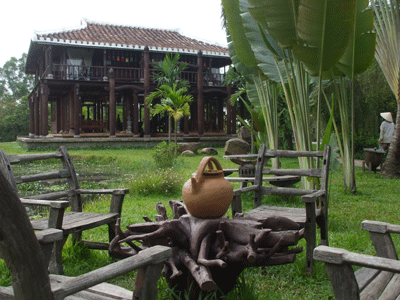
Not only that, this place also preserves hundreds of precious Ao Dai which are solemnly and splendidly displayed in the ancient houses. Its owner spent decades to build the museum into the solemn one it is today.

The museum currently displays more than 60 unique and famous ao dai.Stories related to everyday ao dai through the ages, showing the history of the ao dai such as: the 17th-century four-panel ao dai, the 18th-century five-panel ao dai, the 19th-century Nguyen Dynasty ao dai...

In addition to the ao dai of the Nguyen king and royal family, the remaining ao dai are associated with famous Vietnamese women in the fields of politics, economics, and culture. In addition to the ao dai collection, the museum also displays many images of ao dai past and present along with many valuable documents about the traditional Vietnamese ao dai.

is a guaranteeThe first traditional costume of Vietnam, few people know that to have a solemn museum dedicated to ao dai today, artist - designer Si Hoang spent over 12 years persistently pursuing the idea and implementing it. His chance to come to ao dai was also by chance. "It was in 1989, at that time I was an intern lecturer of the fine arts department at the Ho Chi Minh City University of Fine Arts and was invited to draw the first ao dai for the ao dai beauty contest organized by the Ho Chi Minh City Women's Newspaper", Si Hoang said. Visiting many famous museums in the world, but perhaps the time he attended the exhibition of 1,500 years of Chinese costume history at the Tokyo Museum was the most haunting for him.

In the modern costume section, they displayed the prototype of the Vietnamese ao dai with both conical hat and wooden clogs! “If we don’t build an ao dai museum soon to confirm that it is“It would be extremely painful to let someone else take away the Vietnamese national costume. Losing culture takes hundreds, even thousands of years to get it back,” Si Hoang shared. From then on, he became even more determined to complete this museum.

Ms. Le Tu Cam, President of the Cultural Heritage Association of Ho Chi Minh City, commented that the establishment of the first Ao Dai museum in Vietnam is a common joy for the cultural sector. This is also an opportunity for each Vietnamese person to have a more correct and profound understanding of the quintessential value of the traditional Ao Dai. Professor Nguyen Khac Thuan also shared the joy: “I am really happy that after so much anticipation, the Ao Dai Museum - a place to preserve the soul of national culture - has officially been born. I also want to contribute a little to this project with Si Hoang, so I am always ready to support and advise so that our Ao Dai Museum can become more and more complete”.

Visitors can come by private vehicle or public transport, following bus route 88 from Ben Thanh market. The museum is open from 8am to 5pm every day, with an entrance fee of 100,000 VND for children under 6 and 30,000 VND for students, free for children under 6 and people over 70.



































